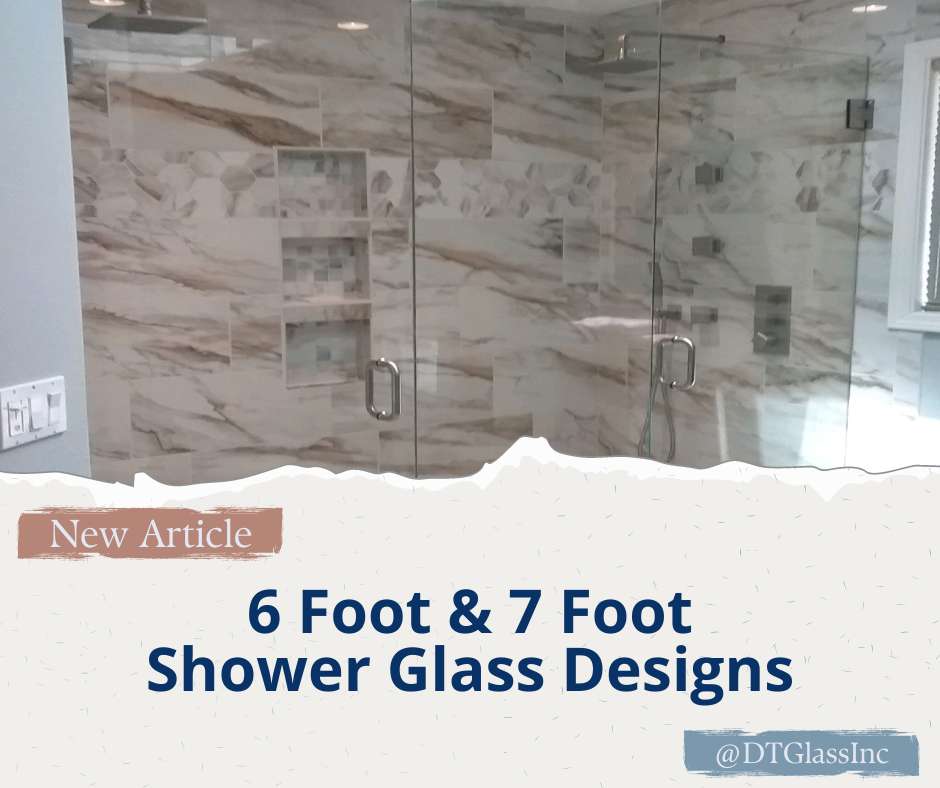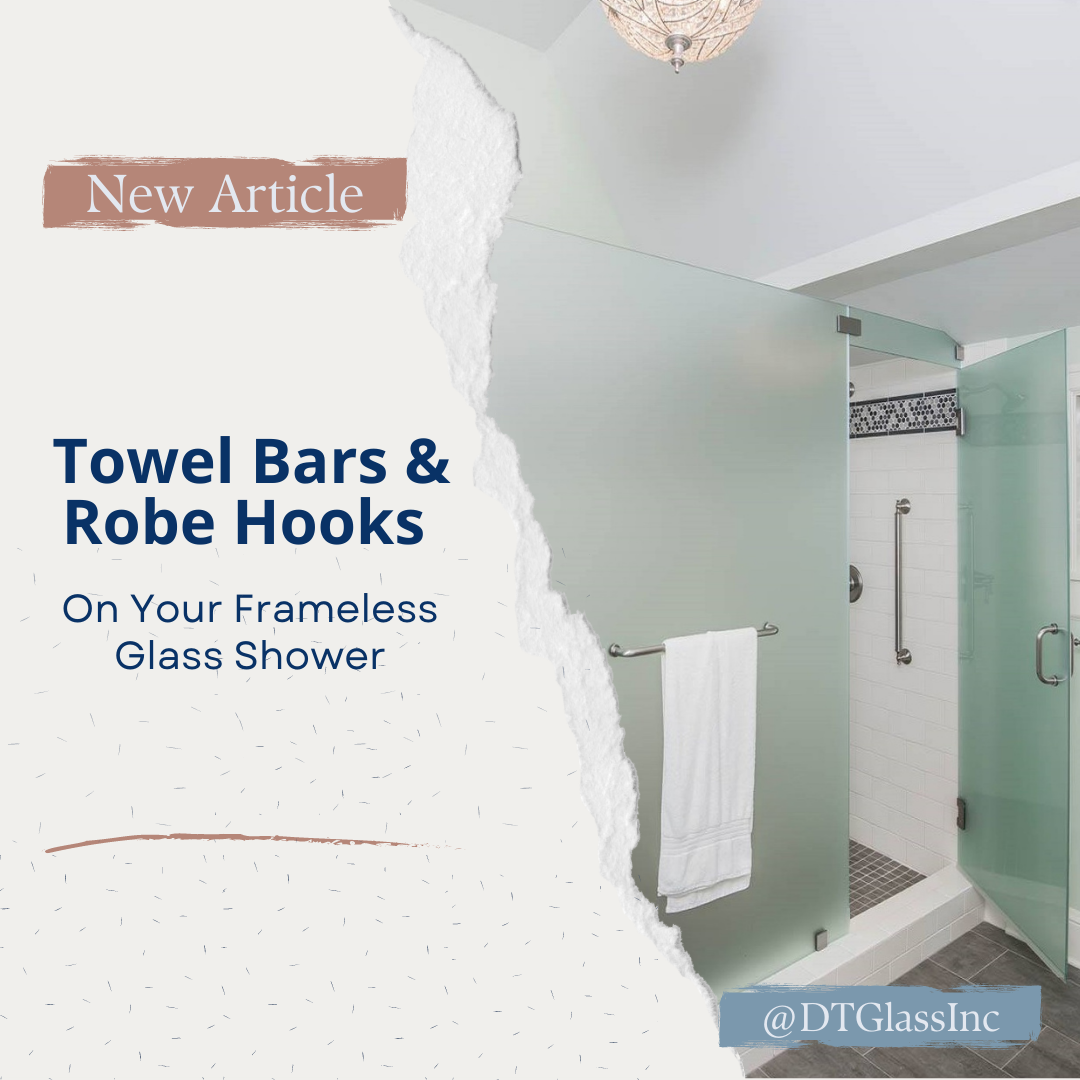
- glass@dtglassinc.com
- (503)-650-6373
SHOWER GLASS: BEYOND CLEAR
By Shannon Mckinney – DT Glass, Inc.
Standard clear glass for showers is an excellent choice. The newest bath fixtures are as much art as they are utility, and your careful tile selections were meant to be seen. We’re used to providing the part of the room that no one notices, or more specifically, they look right through it.
Perhaps instead, you want your glass to do more. Your glass could be more clear, less clear, or it could become the standout in the room.
Some common reasons for selecting patterned glass include:
Hiding a shower interior that doesn’t enhance the room
Camouflaging water spots between cleaning
Providing more privacy while showering
Creating a focal point for the room

How can glass be more clear? Standard clear glass has a slight green tint to it. This is caused by the iron in the glass. As light passes through, the iron particles cause the light to appear more green. The larger or thicker the glass, the more the green tint “stacks up” to become darker and more noticeable. Low-Iron Glass contains less iron, so there’s less green tint. Low-iron glass still has some color, but it is a slightly blueish tint rather than a green tint. The environment has a lot to do with whether or not it’s worthwhile to spend more on low-iron glass. Rooms with lots of natural light and white surfaces will show the green in the glass more, and even the lighter tint of low-iron will still be seen. When deciding on low-iron glass, do not be deceived by small samples, they won’t be representative of a full-sized shower. Remember, the larger the glass, the darker the color.
Obscure glass is a broad term to describe any glass where a pattern or texture creates and “obscured” view through the glass. The level of obscurity can vary from mostly see-through ripples in the glass to a completely opaque design that will only show silhouettes or shadows.
Pattern glass produced in larger batches, is made by running hot glass through rollers that press the pattern onto the glass. The size of the roller determines the depth of the pattern and how often it repeats. Manufacturers must decide which patterns to create, in which thickness and at what quantity. The added production work and the potential for inventory to sit on the shelf both contribute to the limited availability and increased cost of patterned glass.
Cast glass is another method of applying a pattern to glass. Instead of running glass through a continuous roller, cast glass is made by creating a large mold that is the same size as the finished panel of glass. Glass is set on the mold, then heated in a large kiln until the glass melts and bends into the shape of the mold. Molds are custom made, will only last through a few castings, and the mold distorts slightly with each use. This creates one of a kind results.

Satin Etch, is another way to add obscurity to the glass. Satin Etch is a chemical process that eats away the smooth, clear surface of the glass, leaving a matte finish that has the look of sandblasting. Shower panels can be cut from sheets of glass where Satin Etch has been applied to the entire panel, or it can be applied to a portion of the glass such as a privacy strip, or digitally applied to create a custom image or design. Sandblasting is still available too, with the added potential of removing different amounts of glass, which could add variety and depth to the design. When choosing Satin Etch or sandblasting, we recommend low-iron glass because the process tends to enhance the green tint that is inherent in standard clear glass.
Colored ceramic frit digital printing is a method of converting any digital image into a picture printed on glass. This could consist of an allover design, or a specific image, using the entire spectrum of colors. The process is similar to screen printing where layers of color are added to a clear background. The difference is that the “paint” is a colored ceramic powder that becomes fused with the base glass through a heating and curing process.
Glass film is an alternative method of adding designs or obscurity to clear glass. This option is not only useful for cost savings, but it can enhance the look of glass that is already in place. The most important consideration for glass film is to only use products that are appropriate for a shower application. Not all film can hold up to the heat and moisture in this environment. It may be a good idea to hire a pro who has the experience to provide a product and installation that will last.

Here are some initial tips for selecting patterned glass:
Make sure that you’re selecting from patterns that are available in the right thickness of glass and can be tempered. Shower glass must be tempered safety glass, and the process of tempering glass is not possible for all patterns.
Watch for limitations on pattern directions and heights.
Be ready for added costs that can increase the total price of the shower by 50-100% or more. There aren’t any low-budget options for patterned frameless glass showers.
Ready to build your shower with glass that is beyond clear? At DT Glass, we can help you explore all the options for creating your unique shower.
At DT Glass, we are committed to breaking through the barriers between homeowners and the showers of their dreams. A cornerstone of this mission is educating and informing our customers. Please visit our website for additional blogs and inspiration.




























